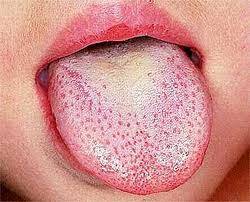Scarlet Fever
Scarlet fever is a bacterial infection caused by Streptococcus pyogenes (Group A Streptococcus). It is most common in children and is characterized by a bright red rash and other symptoms. While once a serious illness, it is now treatable with antibiotics.
---
Causes of Scarlet Fever
1. Bacterial Infection:
Caused by Streptococcus pyogenes, which also causes strep throat.
2. Toxin Release:
The bacteria produce toxins that trigger the characteristic rash and other symptoms.
3. Person-to-Person Transmission:
Spread through respiratory droplets when an infected person coughs or sneezes.
4. Contaminated Surfaces:
Touching surfaces or objects contaminated with the bacteria.
5. Sharing Food/Drink:
Contact with an infected person’s saliva.
---
Signs of Scarlet Fever
Initial Symptoms
1. Sore Throat:
Red, swollen throat with white or yellow patches.
2. Fever:
High temperature (101°F or higher).
3. Chills.
Rash and Skin Symptoms
4. Red Rash:
Fine, sandpaper-like rash starting on the neck and chest before spreading.
5. Strawberry Tongue:
Red, swollen tongue with a bumpy texture.
6. Flushed Face:
Cheeks appear red, but the area around the mouth stays pale.
Other Symptoms
7. Swollen Lymph Nodes.
8. Headache.
9. Abdominal Pain.
10. Nausea or Vomiting.
---
Effects of Scarlet Fever
Short-Term Effects
1. Difficulty swallowing due to a sore throat.
2. Discomfort from rash and fever.
3. Dehydration from fever and reduced fluid intake.
Complications (if untreated)
4. Rheumatic Fever:
An inflammatory disease affecting the heart, joints, and nervous system.
5. Kidney Damage (Glomerulonephritis):
Inflammation of the kidneys caused by an immune reaction.
6. Ear Infections.
7. Sinus Infections.
8. Pneumonia:
Infection spreading to the lungs.
9. Septicemia:
Bacteria entering the bloodstream, causing widespread infection.
10. Abscess Formation:
Pus-filled pockets around the tonsils or other tissues.
---
Solutions and Management of Scarlet Fever
Medical Treatment
1. Antibiotics:
Penicillin or amoxicillin is the primary treatment.
Alternatives like erythromycin for those allergic to penicillin.
2. Pain Relievers:
Over-the-counter medications like ibuprofen or acetaminophen to reduce fever and pain.
3. Throat Lozenges:
Help soothe a sore throat.
Home Remedies
4. Hydration:
Drink plenty of fluids to prevent dehydration.
5. Rest:
Adequate sleep and rest to support recovery.
6. Warm Saltwater Gargles:
Relieves throat discomfort.
7. Cool Compresses:
Applied to the skin to soothe the rash.
Prevention Measures
8. Hand Hygiene:
Wash hands frequently with soap and water.
9. Avoid Sharing Items:
Do not share utensils, towels, or bedding with an infected person.
10. Isolate the Patient:
Keep the infected person away from others until 24 hours after starting antibiotics.
Follow-Up Care
11. Monitor for Complications:
Watch for symptoms of rheumatic fever or kidney issues after recovery.
12. Complete Antibiotic Course:
Prevent relapse or bacterial resistance.
---
When to See a Doctor
High fever lasting more than 48 hours.
Persistent sore throat or worsening symptoms.
Difficulty swallowing or breathing.
Rash spreading or not improving after 48 hours of antibiotics.
With prompt treatment, scarlet fever typically resolves without lasting effects. Early intervention is key to preventing complications.


